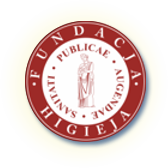Medycyna Doświadczalna i Mikrobiologia 2013, 65(1): 19-26
Ocena wpływu glukozy na tworzenie biofilmu przez Staphylococcus aureus i Escherichia coli na powierzchni siatki polipropylenowej
[Evaluation of the effect of glucose on Staphylococcus aureus and Escherichia coli biofilm formation on the surface of polypropylene mesh]
Streszczenie
Oceniano wpływ glukozy na tworzenie biofilmu przez szczepy Staphylococcus aureus i Escherichia coli na powierzchni siatki polipropylenowej. Badanie wykonano metodą jakościową - redukcji chlorku 2,3,5-trójfenylotetrazoliowego oraz metodą ilościową – seryjnych 10-krotnych rozcieńczeń. Stwierdzono, że glukoza w stężeniu 0,1% i 0,2% zwiększa tworzenie biofilmu przez S. aureus, natomiast w stężeniu 0,2% ogranicza ten proces u E. coli.
Abstract
Introduction: One of the most serious complications associated with the use of implants in hernia surgery is deep surgical site infection involving an implanted biomaterial. Among the major etiological factors of this complication are Staphylococcus aureus and Escherichia coli strains, which have the ability to form a biofilm on the surface of the mesh implant. This process is influenced by many factors, of which, according to current medical knowledge, the concentration of glucose may have a clinical significance. The aim of the presented study was to evaluate the effect of glucose on the formation of biofilm on the surface of monofilament polypropylene mesh.Methods: The study included 140 bacterial strains (70 S. aureus and 70 E. coli) from the collection of Department of Microbiology Collegium Medicum im. L. Rydygier in Bydgoszcz, Nicolaus Copernicus University in Torun. Evaluation of the effect of two glucose concentrations (0,1% and 0,2%) on biofilm formation was performed using a qualitative (2,3,5-triphenyltetrazolium chloride reduction) and a quantitative ( serial 10-fold dilutions) methods. Results: A qualitative analysis, performed after a period of incubation on substrates containing various concentrations of glucose, has revealed a statistically significant increase in the percentage of S. aureus strains with a very high potential for biofilm formation, while for E. coli an increase was observed in the percentage of strains with a low potential for biofilm formation. In a quantitative analysis of the biofilm of S. aureus forming after incubation on a substrate containing 0.1% and 0.2% glucose, significantly more colony forming units (CFUs) were isolated per one milliliter of the suspension (CFU/ml) than in the control group biofilm samples. On the other hand, the biofilm created by E. coli after a period of incubation on a substrate containing 0.2% glucose yielded significantly fewer CFUs per one milliliter than from the biofilm resulting from incubation on substrate with 0.1% glucose or the control group. No statistically significant difference was found between the numbers of CFUs per one milliliter isolated from E. coli strains after incubation on a substrate with 0.1% glucose and the control group.Conclusions: At concentrations of 0.1% and 0.2%, glucose increases biofilm formation by S. aureus strains on the surface of monofilament polypropylene mesh; at 0.2% glucose limits biofilm formation in E. coli.
Liczba pobrań: 1957




